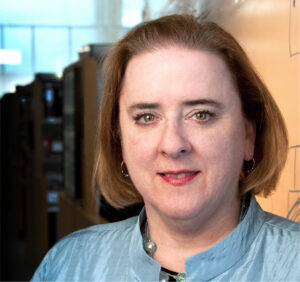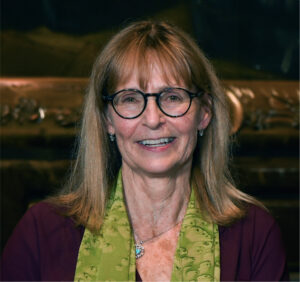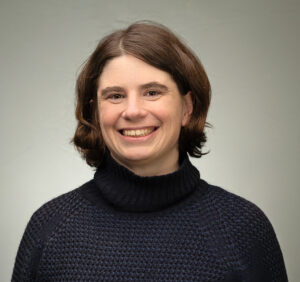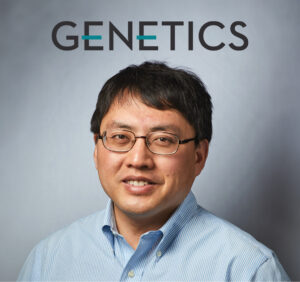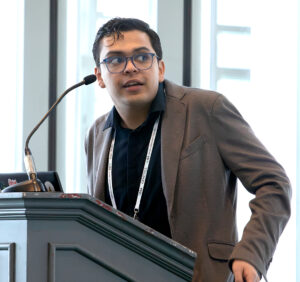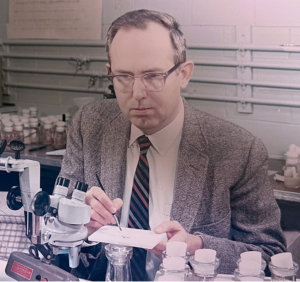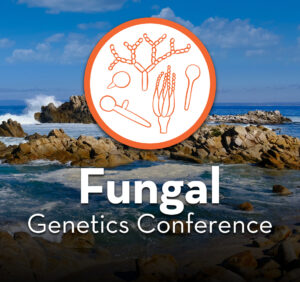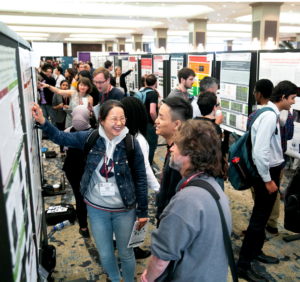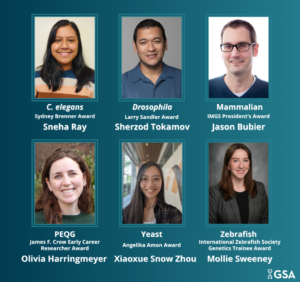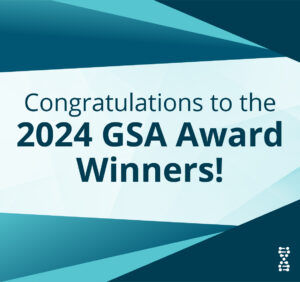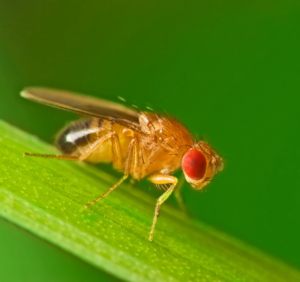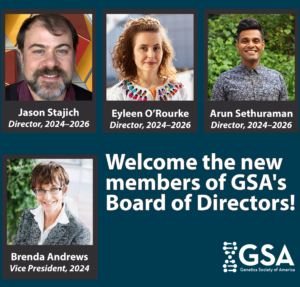Sumitra Tatapudy
Communication and Outreach Subcommittee
University of Washington
Research Interest:
I am very interested in genetics, development, and biology education research. My primary motivation for pursuing a PhD in stem cell biology and genetics was an unwavering appreciation for the elegant process of development and the satisfaction of solving complex problems in genetics. My curiosity about cell fate decisions and how they orchestrate tissue organization during development drew me to the Nystul lab at the University of California, San Francisco (UCSF). In investigating mechanisms impacting stem cell fate decisions, I learned that certain mutations give stem cells a competitive advantage or disadvantage, leading them to outcompete or be replaced. Such biased competition can cause differentiation defects and compromise function within the follicle stem cell lineages (FSC) in Drosophila ovaries. For my thesis, I discovered how the loss of Bendless (ben), an E2 ubiquitin ligase, resulted in mutant cells more likely to outcompete wild-type stem cells in the FSC niche, creating a “hypercompetitive” phenotype. We found that ben regulates JNK signaling, a pathway that controls cellular differentiation and proliferation during development and cellular stress responses. Specifically, we found that the loss of ben leads to differentiation defects and increased FSC proliferation, explaining the hypercompetitive phenotype. Overall, findings from this study revealed a new layer of regulation, demonstrating how a single gene can influence cell signaling at multiple stages of differentiation in the early FSC lineage. I thoroughly enjoyed conducting experiments and deciphering the signaling mechanisms that regulate cell fate decisions.
At the same time, my interest in education, teaching, and evidence-based pedagogy grew throughout graduate school. I pursued multiple opportunities to develop skills in biology education research (BER), introducing me to questions focused on improving STEM students’ learning experiences. Recognizing that STEM is not set up for equal access and success for all, I developed an interest in equity-focused research in STEM. I secured a Washington Research Foundation Postdoctoral Fellowship to investigate how competition—a known reason for the disproportionate attrition of historically underserved students in STEM—impacts students’ sense of belonging and academic outcomes. As part of Elli Theobald’s lab at the University of Washington, I conducted a study with racially minoritized and first-generation students to understand how they perceive competition in their STEM classes and to determine its impact on belonging. While previous research has found that grading practices (criterion- or norm-referenced) can influence perceptions of competition, students identified various student, instructor, course, and out-of-class influences that make their STEM classes competitive. Specifically, we found that when students described a class as competitive, they frequently identified inequities in their environments. Furthermore, students shared how competitive environments can negatively impact their sense of belonging in STEM. Through my postdoctoral fellowship, I also developed an interest in creating tools for inclusive teaching tools. To this end, I contributed to the creation of Equity-App, which enables instructors to visualize student performance data disaggregated by demographic groups to identify underserved students in their classrooms. Instructors know their contexts best; therefore, by continuing to create such tools, I aim to empower them to collect data and implement changes to promote equity and inclusivity.
I am committed to making stem cell biology and genetics more approachable through teaching roles while also advancing equity-driven innovations in STEM education research.
As a PhD-trained scientist, you have many career options. What interests you the most?
I truly enjoy the process of research. Developing hypotheses, designing experiments, thinking through potential outcomes, critically evaluating whether the direction will be beneficial, interpreting data, and presenting results—all aspects present challenges, but the satisfaction of overcoming them and contributing to knowledge is unmatched. I also really enjoy teaching and mentoring. Understanding how differently students organize concepts got me interested in conveying genetic and molecular biology topics in various ways and devising strategies to identify areas of misunderstanding. In the future, I aspire to secure a position as a biology faculty member, with opportunities to teach both biology and biology pedagogy courses, while leading my own research group. In addition, I have recently become interested in learning more about grant reviewing and management. That career path seems like an exciting combination of applying critical thinking when evaluating research proposals and contributing to a tangible path for enabling change.
In addition to your research, how do you want to advance the scientific enterprise?
I believe that cultivating enthusiasm for science and developing a scientific mindset are crucial to advancing the scientific enterprise. As a graduate student, I volunteered at several science fairs and high schools and took every opportunity to teach biology to students both in the U.S. and India. In the last decade, the tools for igniting enthusiasm for science among students have evolved. For instance, I remember volunteering at a Bay Area Science Fair in 2014, where I introduced students to FoldScopes. Later, I volunteered at another science outreach event at the Children’s Discovery Museum, teaching children how to use and enjoy LegoScopes. Such innovative tools have grown exponentially, making this an exciting time for science outreach. They have proven to be extremely effective at not only introducing students to scientific concepts but also fostering a scientific mindset. By engaging students in hands-on experiences with such tools, we encourage them to ask questions, think critically, and develop their problem-solving skills, which are essential components of a scientific approach.
My motivation to become a biology educator stems from the fantastic teachers I’ve had throughout my journey, who ignited my love for learning and encouraged my curiosity. For this reason, I strive to focus on my mentorship and teaching so that students in my class feel welcome, seen, valued, and encouraged to bring their ideas, make mistakes, and learn together. For instance, during my time at Vidya Pratishthan, a college known for its commitment to empowering students from underserved communities, I implemented interactive workshops where students could design simple experiments using everyday materials. This hands-on approach not only made science more accessible but also encouraged students to express their creativity and curiosity. I witnessed firsthand how these experiences helped foster a sense of ownership over their learning, as they engaged in discussions about their findings and learned to embrace the iterative nature of the scientific process. By prioritizing an inclusive and supportive classroom environment, I aim to create similar opportunities that empower all students to explore and enjoy science, and I believe that this approach moves the scientific enterprise forward!
I am grateful to be part of a subcommittee focused on developing resources and events that inspire young learners, promote the inclusive representation of scientists, and enhance scientific literacy. Through every project, I have learned new ways to contribute to the community and ignite enthusiasm for science. Therefore, I believe that scientific outreach is a powerful way to advance the scientific enterprise, and I’m excited to continue contributing to it in all ways possible through my future career.
As a leader within the Genetics Society of America, what do you hope to accomplish?
My motivation to participate in this initiative comes from the support and mentorship I have received throughout my career. I hope to grow as a mentor and communicator while creating content that engages the broader scientific community. As a leader within the Genetics Society of America (GSA), I am excited to utilize the organization’s global reach to contribute to projects that make science more accessible and understandable. A key aspect of the GSA Early Career Leadership program is the chance to work with scientists from diverse backgrounds; therefore, collaboration can lead to the development of content that is relevant and beneficial to scientific communities worldwide. I am excited to contribute to collaborative projects, where we discover common needs we can meet through effective science outreach. Through our science communication efforts, in addition to summarizing complex scientific concepts, the diverse experiences of our subcommittee members can inspire initiatives aimed at making the journey of science relatable to young minds. Questions, such as what inspired members to pursue science, which concepts captured their interest, and which role models guided them, can help make science relatable and potentially inspire young scientists to pursue STEM. Furthermore, much of the brilliance in science arises from mistakes or unexpected discoveries. By framing failure and mistakes as inevitable parts of the scientific journey, science communication can help normalize setbacks and reduce the fear of failure among aspiring scientists. Additionally, outreach efforts that create welcoming spaces for young minds to explore their enthusiasm for science can demystify the scientific process, making it more accessible and encouraging for future scientists.
As co-chair, I rely on my leadership background to establish a common vision for our subcommittee and facilitate collaboration toward our goals. My focus is on supporting the goals of our subcommittee members. Establishing objectives based on our collective interests is essential for fostering a sense of shared responsibility for our successes. I plan to work closely with all subcommittee members to outline a clear set of goals and vision. Additionally, I will strive to provide practical insights and create actionable plans that consider the various commitments each member may have. Therefore, my definition of success in this position is cultivating my ability to foster a supportive and enabling environment.
Previous leadership experience
During my time as a graduate student at UCSF, I had the chance to serve in multiple leadership roles. For instance, as a Student Diversity Officer for the Associated Students of Graduate Division, I advocated for programs that support students from diverse backgrounds and proposed cultural sensitivity training. As the Graduate Student Mental Health Liaison and Basic Science Representative for the Graduate and Professional Student Association, I worked to create spaces for students to discuss mental health and academic concerns. I also served as co-chair for the Mentorship Improvement Initiatives with Women in Life Sciences, organizing events to enhance faculty-student and peer mentorship. Additionally, as Vice President for External Affairs, I represented UCSF students at UC-wide meetings, addressing policies impacting graduate education. Lastly, as UCSF’s Government Relations Delegation Leader, I advocated for graduate student concerns to local and state legislative bodies, focusing on such issues as affordability, mentorship, and diversity. I have been excited to apply what I’ve learned through all these experiences in my new role as co-chair for the Communications and Outreach Subcommittee, and I look forward to expanding my knowledge and skills for effective leadership.













